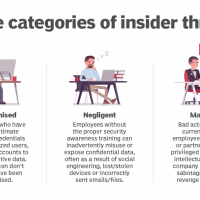In the rapidly evolving landscape of cybersecurity, infostealer malware has emerged as a significant and growing threat to businesses worldwide. Recent incidents, such as the discovery of a publicly exposed database containing over 184 million unique logins and passwords, underscore the severity and scale of this problem. This article provides a comprehensive overview of infostealer malware, its impact, and actionable recommendations to mitigate this threat.
Category Archives: data breaches
Why Rapid Response is Critical for Cybersecurity Incidents
A cybersecurity incident is not just a technical problem; it’s a fast-moving crisis. The moment a breach is suspected or detected, an invisible clock starts ticking. Every second that passes without a coordinated, rapid response significantly escalates the risk and amplifies the potential damage. The urgency involved isn’t just a matter of best practice; it’s a fundamental necessity for mitigating harm.
Why You Absolutely Need an Incident Response Plan
Think of it this way: you wouldn’t build a house without blueprints, right? You wouldn’t just start nailing boards together hoping for the best. Similarly, you shouldn’t operate your business’s digital assets without a plan for what happens when something inevitably goes wrong in the cyber world. An Incident Response Plan (or IRP for short) is your blueprint for handling a security breach or cyberattack.
The Importance of Compartmentalizing Data: Preventing Insider Threats
Data breaches have become a common occurrence, with hackers seeking to exploit any vulnerabilities in an organization’s security. While external threats often dominate the conversation surrounding cybersecurity, it is essential not to overlook the risks posed by insiders. Compartmentalization is one important strategy that can help to mitigate data breach and other cybersecurity risks.
The Threat of Insider Data Breaches
In the realm of cybersecurity, the risk of insider threats, encompassing both compromised and negligent employees as well as those who intentionally go rogue, is a critical and often overlooked aspect.




